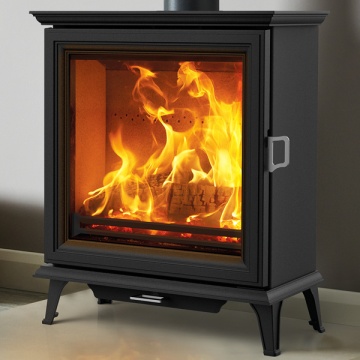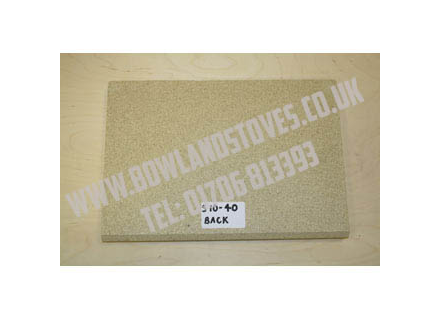If you have a wood-burning or multifuel stove you will no doubt have come across the term firebrick. You will probably have bought one, maybe even installed one yourself but what is the actual purpose of a firebrick? What do they do? Do they need replaced? What are the signs of wear and tear?
Protection and added heat
The key to the performance of firebricks is the fact that even under the most intense heat the outer surface always remains cool. If you take a look at your stove you will see that the firebricks are used to line the inner area of the firebox which is traditionally made of steel or cast iron. This prompts the question, if the firebox is made of such tough metal then why does it require the protection of firebricks?
To understand the way in which a stove works we need to appreciate the extreme heat which is created within the firebox. If it was simply left as a steel/cast-iron firebox then over time the extreme heat and the chemicals from the combustion process would eventually erode the metal on the inside of the firebox. This would obviously have a significant impact on the efficiency of a stove and can also cause further problems with other elements. In summary, the stove would likely become unsafe.
Protecting the firebox structure
So, one of the two main uses of firebricks is to offer protection to the inner metal layer of the firebox. This is done by placing the firebricks around the inside of the firebox. Firebricks for each individual stove may be different in size to ensure that the fit is snug. This ensures no heat can escape and impact the steel casing.
Maintaining firebox temperature
The second major use of firebricks is to ensure that as much heat as possible is retained within the firebox. By lining the inside of the firebox with firebricks the heat is reflected back into the firebox and only allowed to escape via the baffle plate exit above. This allows a much more efficient combustion process with extremely high temperatures as a result of the mix of new heat from the fuel and reflected heat. In effect it also offers a degree of insulation for the stove body and other elements of the stove.

Cracked and worn firebricks
It is not difficult to understand that over time firebricks can crack and become worn due to the excessive heat to which they are exposed to every time the stove is used. As a consequence, a damaged firebrick should be replaced as soon as possible to ensure maximum efficiency and maximum controlled heat output is maintained. One cracked or damaged by brick may allow heat to directly hit the inside metal layer of the firebox. This will also expose the cooler side of the firebricks to heat and can cause additional damage.
Replacing firebricks
While some firebricks can be “fiddly” to remove and replace, in practice it is simply a case of replacing one firebrick with another. This is why it is essential that you purchase firebricks which are manufactured specifically for your type of stove. The seal between the firebricks needs to be tight as they need to be able to reflect heat while maintaining a cooler outer surface next to the steel sides of the firebox. The more common material used for firebricks is vermiculite which is very good at reflecting heat back into the firebox while maintaining a cooler outer layer – it is not a very good conductor of heat, perfect for this scenario!
Summary
The concept of a firebrick is extremely simple; it reflects heat back into the firebox while maintaining a degree of protection for the inner steel area of the firebox. It is therefore essential that you check your firebricks on a regular basis to ensure that they are not cracked or damaged in any way. While some stove users may think it is acceptable to delay replacing damaged firebricks, this can have a material impact on the heat output of your stove and increase your fuel usage and cost. In effect, this type of delay is something of a false economy.

